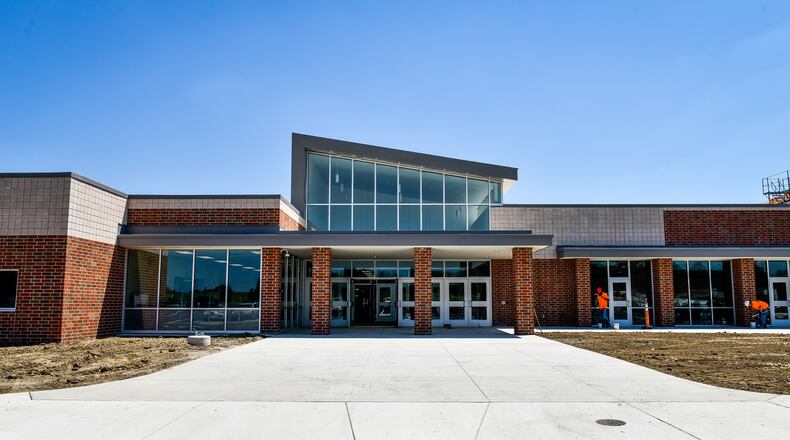Without wi-fi access and learning laptops all the talk about transitioning to home learning during the coronavirus pandemic remained just talk to her family last spring when all of Ohio’s K-12 schools were ordered closed due to the threat.
Withrow’s children were forced to try and learn through paper assignments mailed or delivered to her home by teachers.
“It was really rough at the end of last school year,” she said.
But for her family – and other needy school families in Middletown and the region – the continued coronavirus threat has helped put a spotlight on a long-standing problem of digital inequity suffered by lower income families, said Middletown Schools Superintendent Marlon Styles Jr.
And the divide has gone on too long, said Styles, who recently testified before a U.S. Congressional committee about the digital divide’s keeping low income students from learning from home.
“The homework gap in this country is real and it’s time to eliminate it,” Styles told the Journal-News.
“Every student deserves to have access to a (digital) device and reliable internet at school and at home,” he said.
Earlier this month Middletown Schools approved the new distribution of laptops to all students in grades 3-12 before the school year opens on Aug. 17.
Moreover, when school parents like Withrow stop by her local school in the coming weeks to pick up the free laptops, she’ll also receive a wi-fi device for her home at no charge.
“It’s all a really big help,” said Withrow. “At one time the internet was just for the kids to have fun but now it’s necessary and it’s going to make learning at home so much easier.”
Action needed “now more than ever”
For years, almost all students – regardless of their family’s income – have had access to laptops and other digital learning devices at their schools.
A few local public school districts, including Talawanda, Lakota and Mason, also allowed most students to take their laptops home.
But the spring onset of the coronavirus forced schools to scramble. Some even resorted to inviting school families – if they even had digital devices - to drive or walk to schools to access free wi-fi available from parking lots.
If the coronavirus brings any positive development, it may end up being “the pandemic has finally made digital divide issues and data equity issues front and center,” said Sarah Schroeder, University of Cincinnati’s director of the Learning Design Collaborative in the College of Education.
“Creating high-quality, on-grade level content and activities for online and blended learning doesn’t mean much if students … can’t access it,” said Schroeder.
Matt Miller, superintendent of Lakota Schools and a long-time advocate for digital learning, agreed that “connectivity for our students and families is something that has been a national issue for nearly a decade and the problem has obviously been exasperated by our current pandemic.”
“Our kids need to be connected to their teachers and their peers, now more than ever. While some connectivity issues are geographical, many of our neediest families are economically stressed and don’t have the means to become connected,” Miller said.
Jon Graft, superintendent of Butler Tech, said the need for closing the digital divide has always been there, but coronavirus shutdown of in-person learning has added even more urgency.
Internet access should now be considered an essential public utility, readily available to all, he said.
“The pandemic has highlighted the inequity in access to wi-fi and this is no longer a frill for the education experience. It is a tool, just as much as a pencil and a piece of paper and wi-fi has become the essential school supply item,” he said.
“It is the access to information and knowledge. It is an equity issue for families in poverty, who are unable to access the necessary tools for academic success. It is time to make wifi a public utility,” he said.
Some at the state level agree, saying the coronavirus has brought digital divide to the forefront.
“As many public school districts implement in-person or online learning this fall, nationwide more than 16 million students and 400,000 educators still lack adequate access to internet or technology,” said Rick Lewis, chief executive officer of the Ohio School Boards Association (OSBA), which represents almost all of Ohio’s 613 public school districts/
“This digital divide hinders their ability to fully benefit from our new system of teaching and learning amid the pandemic,” said Lewis.
Styles said closing the gap will take “calls for action” to convince “the Federal Communications Commission along with federal and state governments to fix the major resource inequities present in school systems here locally and across the country.”
“It’s time to make it happen.”
About the Author
